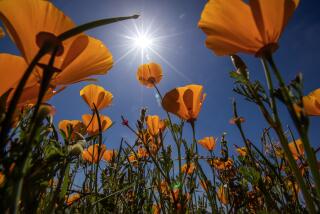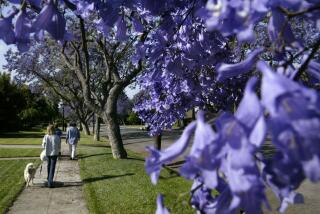In a Good Light
Cymbidiums need light to assure good bloom, but during the hotter months they like a little protection from the sun at midday and early afternoon. Luxuriant dark green leaves are a sign that the plants aren’t getting enough light; the foliage should be a light golden-green. To give cymbidiums more light, move them gradually into the sun; if you move them too fast, the leaves will develop oval-shape black spots, which is sunburn. Apply a low-nitrogen fertilizer now, and keep them well watered.
Fall bulb season starts about now. Freesias are a natural for Southern California because they come from southern Africa, which has a climate similar to ours. Because they tend to get top-heavy when it rains or if they are under sprinklers, you’d be wise to plant the bulbs under a low ground cover that will serve to hold the foliage up. Dutch iris, not really from Holland but hybridized there, is another good bulb for Southern California. It comes in many colors: white, yellow, blue, purple or yellowish brown. A light blue variety of iris, ‘Wedgewood,’ a North African species, does particularly well here.
Whitefly a problem? These tiny summer insects multiply rapidly into large populations, congregating on the underside of leaves. You know you have them if, when you brush against the plant, they fly out in all directions. Nurseries sell a yellow flypaper-like product that can be hung near the plant. Because these insects are attracted to the color yellow, they’ll go for the paper when you shake the plant. Repeat this process every so often, and you’ll get rid of most of them.
Improper drainage causes the demise of more young fruit trees than any other factor. After you purchase a tree, choose a sunny planting site and dig a hole twice as wide as the root system but only as deep as the tree had been set into its container. Test for good drainage by filling the planting hole with water. Let the water drain completely and fill the hole again. If the water does not disappear this second time within 12 hours, pick another location or check a basic gardening book about how to deal with poorly drained soils. (Two solutions would be drain-tiles or holes augered into the bottom of the planting hole.) In adequate soils, place the tree in the planting hole and fill with the soil you originally removed. Add slow-release fertilizer tablets, such as Agriform, to the soil; the young roots of newly planted fruit trees are burned when heavily fertilized.






